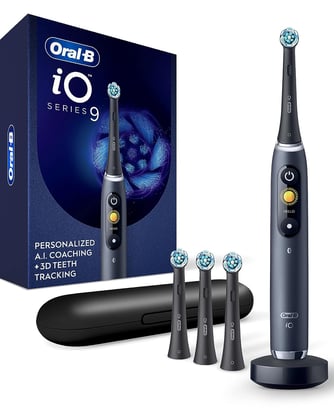Electric vs. Manual Toothbrushes: Choosing the Right Tool for Your Oral Health Routine
The Art of Quality Brushing: Proper Technique and Routine for Your Manual Toothbrush
Brushing your teeth is a simple yet crucial part of your daily oral hygiene routine. It's the cornerstone of maintaining good oral health and preventing common dental issues like cavities and gum disease. However, simply brushing your teeth isn't enough; the quality of your brushing and the techniques you use matter significantly. In this comprehensive guide, we'll explore why quality brushing is essential and provide you with the proper brushing technique and routine for your manual toothbrush.
Why Quality Brushing Matters
1. Plaque Removal:
Plaque is a soft, sticky film of bacteria that forms on your teeth. If not removed effectively, it can lead to tooth decay and gum disease.
Quality brushing ensures the thorough removal of plaque, reducing the risk of dental problems.
2. Preventing Gum Disease:
Gum disease, including gingivitis and periodontitis, can be prevented with proper brushing techniques.
Effective brushing helps prevent gum inflammation, bleeding, and the formation of gum pockets.
3. Fresh Breath:
Proper brushing removes food particles and bacteria responsible for bad breath, leaving your mouth feeling fresh.
4. Preserving Tooth Enamel:
Aggressive or improper brushing can damage tooth enamel. Quality brushing techniques protect your enamel while effectively cleaning your teeth.
The Proper Brushing Technique
Step 1: Choose the Right Toothbrush and Toothpaste
Select a soft-bristle manual toothbrush with a comfortable grip. Soft bristles are effective yet gentle on your gums and enamel.
Choose a fluoride toothpaste to strengthen your enamel and prevent tooth decay.
Step 2: Prepare Your Toothbrush
Apply a pea-sized amount of toothpaste to your brush.
Step 3: Correct Brushing Motion
Hold your toothbrush at a 45-degree angle to your gums.
Use gentle, circular motions. Avoid aggressive scrubbing, which can damage your gums and enamel.
Brush all surfaces of your teeth: the fronts, backs, and chewing surfaces.
Step 4: Focus on Each Section
Divide your mouth into quadrants: upper left, upper right, lower left, and lower right.
Spend 30 seconds brushing each quadrant, ensuring thorough cleaning.
Step 5: Don't Forget Your Tongue and Roof of Your Mouth
Gently brush your tongue to remove bacteria responsible for bad breath.
Brush the roof of your mouth to eliminate bacteria and freshen your breath.
Step 6: Rinse and Clean Your Toothbrush
After brushing, rinse your mouth thoroughly with water.
Clean your toothbrush and let it air dry.
Step 7: Floss Daily
Dental floss reaches areas between your teeth that your toothbrush can't access.
Incorporate daily flossing into your oral hygiene routine for comprehensive cleaning.
Implementing a Quality Brushing Routine
Morning Brushing:
Start your day with a thorough brushing session to remove plaque and bacteria that accumulate overnight.
Brush before or after breakfast, depending on your preference.
After-Meal Brushing:
If possible, brush after each meal to remove food particles and prevent plaque buildup.
If you can't brush immediately, rinse your mouth with water to remove some debris.
Evening Brushing:
End your day with another comprehensive brushing session to clean your teeth before sleep.
Make this the most thorough brushing session of the day.
Pre-Bedtime Routine:
After your evening brushing, refrain from eating or drinking anything (except water) to allow your saliva to naturally protect your teeth during sleep.
Regular Toothbrush Replacement:
Change your manual toothbrush or toothbrush head every three to four months or sooner if the bristles become frayed.
Additional Tips for Optimal Oral Hygiene
1. Stay Hydrated:
Drink plenty of water throughout the day to promote saliva production, which helps protect your teeth.
2. Avoid Tobacco Products:
Smoking or using tobacco products can increase the risk of gum disease, tooth decay, and oral cancer.
3. Limit Sugary and Acidic Foods:
Reduce your consumption of sugary and acidic foods and beverages, which can contribute to tooth decay and enamel erosion.
4. Regular Dental Check-ups:
Schedule biannual dental check-ups and cleanings with your dentist to monitor your oral health and address any concerns.
Conclusion
Quality brushing is the foundation of a healthy and beautiful smile. By following the proper brushing technique and implementing a consistent brushing routine, you can effectively remove plaque, prevent gum disease, maintain fresh breath, and preserve your enamel.
Remember that your dentist and dental hygienist are valuable resources for guidance and personalized oral care recommendations. Don't underestimate the power of a quality brushing routine—it's a small daily effort with long-lasting benefits for your oral health and overall well-being.


